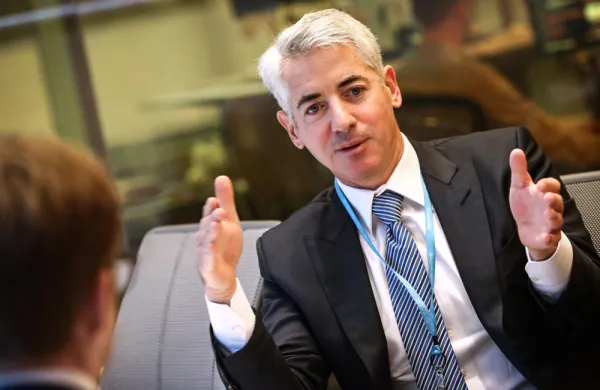ExxonMobil is a beast.
It’s one of the largest publicly traded oil and gas businesses in the world, its brand universally recognized. Its annual general meeting in Dallas, therefore, is a serious affair; 135 years on, it is attended and watched by thousands.
Shareholders know that any proposals that go against the board’s wishes are likely to attract serious media attention. This was the case in 2016 when 38 percent of investors pleaded with the board to produce an annual report monitoring how the business would be affected by global efforts to cut carbon emissions. But though the vote might have made some column inches in the press, the board brushed off concerns, knowing that its majority was supreme. Back then the proposal went no further.
But things change.
This year board members were probably expecting a similar outcome. They were, however, in for a disappointment. On May 31, 62.2 percent of shareholders voted in favor of annual climate risk reporting.
The news was startling, not just because of the result, but also because of who voted.
Since the ’80s the likes of Carl Icahn and Bill Ackman have been elevated to “activist investor” status for staging shareholder revolts. But the Exxon vote wasn’t the work of Icahn or Ackman.
Instead, it was BlackRock and Vanguard.
The two passive houses collectively held about 13 percent of the company’s shares at the time of the vote. And anyone thinking the ExxonMobil vote was a one-off are in for an even ruder awakening.
It seems the passive players are embracing both carrot and stick approaches to get companies to comply with new “best practice” standards that they believe will lead to better-behaved companies and better shareholder returns (because the companies will perform better as a result). And among those issues at the top of the list of governance demands is climate change.
Speaking to Institutional Investor, Glen Booraem, global head of corporate governance at Vanguard, said: “As owners of shares in most companies around the world, we have an obligation on our shareholders’ behalf to support and advocate for actions which, we believe, will enhance the long-term value of those companies.”
Investors searching for further examples of this work in practice don’t have to look too far from Exxon: Management at sector mate Chevron was also rattled by the new-look punchy passives as the company’s annual general meeting approached. Like Exxon, Chevron had witnessed increasing demands from investors to report on policies to minimize climate damage; BlackRock was one of the investors working quietly in the background to encourage the firm to do more.v
As this year’s vote approached, investors again put forth a proposal asking for a similar report. Then, in the weeks leading up to the meeting, the shareholder proposal was withdrawn. Management had conceded, and the company published an 18-page analysis in line with investors’ wishes.
Michelle Edkins, global head of investment stewardship at BlackRock, tells Institutional Investor that getting Chevron to produce the report wasn’t purely the result of the shareholder proposal, but was the product of “a couple of years” of efforts behind the scenes. She says representatives from fund firms have already made it clear that they will be seeking “further engagement” in the coming years to ensure that the company continues to honor its commitments on climate change.
Though Exxon and Chevron are case studies in passive managers’ involvement, they are by no means isolated examples. Recently, Vanguard was lauded for voting against the re-election of three directors at Wells Fargo after the company became embroiled in a sales scandal over “fake accounts.”
Elsewhere, BlackRock supported an investor resolution from the California Public Employees Retirement System demanding that Occidental Petroleum give clearer assessments of the business’s activities on climate change.
What has become clear is that investors and active fund managers increasingly believe they need to work in partnership with passive managers to get resolutions passed or to materially affect corporate behavior. After all, BlackRock, State Street, and Vanguard have more than $11 trillion in assets under management combined. Vanguard alone says it engaged with 954 companies in the year ended June 30, 2017.
It remains true that managers of passive funds are compelled to buy the shares in which they invest, the result of indexing. Yet just because they must own shares in these companies doesn’t mean they have to accept bad behavior.
Patrick Connolly of U.K.-based investment consulting firm Chase de Vere notes that asset managers have an opportunity to vote and assert influence in line with their views and beliefs — and that passive investment managers shouldn’t be precluded from doing so too. “It is sensible for investment companies to pool their active and passive holdings if this means they are able to assert more influence which can help to bring about positive changes,” he says.
Globally, listed companies’ management teams often have a significant amount of power when it comes to shareholder voting. And fund firms know, therefore, that the only way to shape behavior is to work together.
Jessica Ground, global head of stewardship at Schroders — an active manager — says the rivalry with passive competitors is two-pronged. “We compete, but we also collaborate,” she explains.
Unlike passive managers — who are compelled to hold a stock — Schroders bases its governance work on an investment case, according to Ground. “We engage alongside our fund managers,” she says. “We focus on issues that we agree are material to the business, where we want to encourage change. That is based on an investment case about why we are investing in a company and where we see the risks.”







